
Two weeks ago I ventured out of the Black Hills and drove across the plains of eastern South Dakota and Iowa to attend the IndyCar race at the Iowa Speedway, the new race track east of Des Moines designed by NASCAR driver Rusty Wallace. Some fun facts about Iowa — the state has 3 million people, 13 million acres of corn, and 15 million hogs.
I had a great time and saw an exciting race that some have described as the best IndyCar race in years. The lead changed hands five times in the last 62 laps with Marco Andretti (grandson of the great Mario Andretti) and Tony Kanaan battling it out. Marco showed exceptional skill and made some great passes, while winning his first race since 2006.
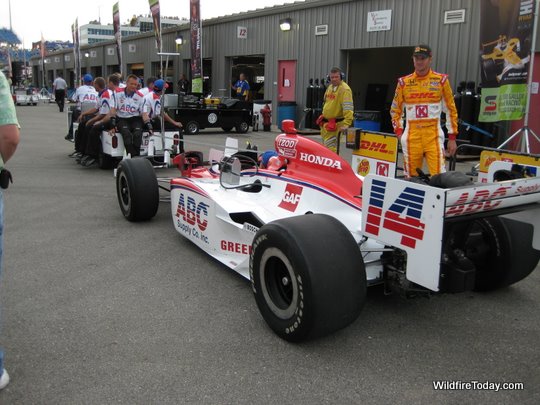
I splurged and paid $30 for a Paddock Pass that allowed access behind the pits to the garage area where the racing teams work on their cars. With that magic Pass I was able to walk around almost anywhere, except for inside the garages and buildings. All of the garage doors were open and cars and drivers were constantly passing by.
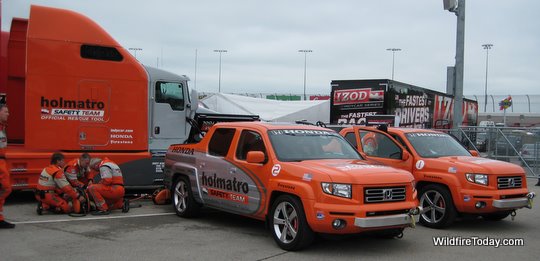
But for a firefighter there was another aspect of the race that was very interesting, and that was the Holmatro Safety Team that is responsible for suppressing fires on the track and rescuing drivers who are involved in crashes. The team consists of approximately 24 safety personnel with a minimum of 14 attending each event–two trauma physicians, three paramedics and nine firefighters/EMTs. Team personnel have an average of 20 years of experience in their respective areas.
I spent about half an hour talking to Mike, a team member that is a retired firefighter from the Tempe, Arizona Fire Department. He has been on the team for a long time, and knew my friend Howard Rayon who also worked on the team. Howard started his career as a firefighter with the US Forest Service on the San Bernardino National Forest and ended it as a Deputy Chief with the Santee California Fire Department. Unfortunately he lost his battle with cancer October 18, 2009.
The Safety Team has four Honda Ridgeline trucks that are stationed just off the track during races and respond immediately to any crash, usually arriving at the car (or cars) within seconds after they slide to a stop.
Three of the trucks have a firefighting system comprised of a 65-gallon water tank in the truck bed, an electric water pump mounted under the chassis below the driver’s seat, and a water discharge on the front with a pre-connected 1-inch hose and nozzle. And yes, I laid on my belly next to the truck to get a good look at the water pump, which is about the size of a large starter motor like you might see powering an electric wind-up hose reel on a fire engine. The pump is designed for volume rather than pressure. (More on this later.)

The fourth truck, instead of having a water tank and pump, has a system for dispensing oil-dry, a product much like kitty litter. If there is a small oil or fuel leak following a crash, the team uses hand-held five-gallon bottles from which they pour the oil-dry to absorb the liquid. If the oil or gas is distributed over a large area, say, if the car crashes into the wall then slides for hundreds of feet, the truck drives along the path of the spill dispensing the oil-dry from a hopper on the rear. Then a large brush the width of the truck is lowered which can spread it around or work it into the liquid.
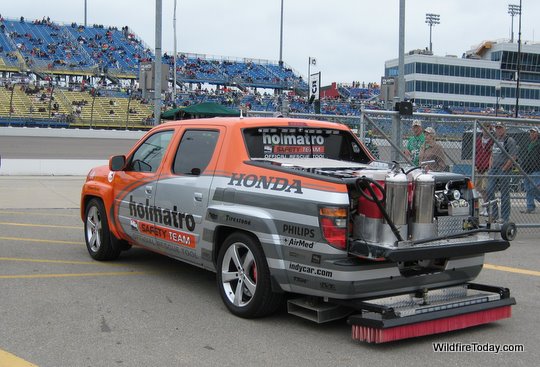

Some of the trucks have pressurized-water (PW) fire extinguishers and various rescue tools, including Holmatro’s hydraulic cutters and spreaders.
Due to excellent design and fuel cell technology on the cars, it has been unusual for the safety team to have a fire on the track that was significant enough to require the use of the pump and fire hose. Until Simona de Silvestro crashed her car into the wall during the race at Texas Motor Speedway in June of 2010, the last time they had to use fire suppression equipment more powerful than a PW was in 2005 when Ryan Briscoe crashed at Chicagoland Speedway in Joilet, Ill.
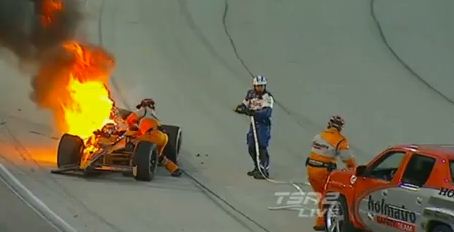
We commented on the team’s response to de Silvestro’s 2010 crash and fire, which unfortunately, was poor. Very poor. The car was not seriously damaged other than the suspension and the front and rear wings, but she sat in the burning car for 32 seconds after the team arrived. Even with the short preconnected hoses on the truck, it took 35 long seconds to get water out of a hose onto the fire, and it was from the second arriving truck — AFTER de Silvestro was yanked out of the car. The hose on the first truck was kinked and the team did not figure out how to deal with that problem. The person that finally brought a PW to the burning car was not able to get any water out if it. De Silvestro was very lucky and sustained only a minor burn to one finger.
Four lessons learned were identified after that incident:
- When there is a fire endangering the driver, the first person off the truck is supposed to grab and operate a PW to protect the driver until they can apply water with the hose. In that case, the PW was an after-thought and the person that carried it to the car was not able to get water out of it.
- The discharge on the front of the truck pointed to the side, which could cause the lightweight hose under low water pressure from the volume (not pressure) electric pump to kink when the hose was fully extended to the front of the truck. Before the race on the following weekend, the team changed the discharges so that they pointed to the front. (See the photo above.)
- They replaced the hose with an even shorter one, reducing the chances of kinks.
- They also used a different type of hose, switching from a thin, lightweight white hose to a thicker yellow version that is more resistant to kinking. The new hose looks like the Hotline hose sold by Wildfire Equipment. When I was Captain at Descanso Engine Station I was in charge of the District’s fire equipment warehouse, and I changed over from the easily kinked white synthetic hose to the less-kinkable yellow synthetic hose from Wildfire.
I have been pretty critical of the team for this serious failure during the 2010 incident in Texas to get any water onto the fire in a reasonable amount of time . Other writers, especially Tony Johns, had similar opinions.
Fast forward to May 19, 2011 at Indianapolis, and lightning struck de Silvestro again, this time at the Indianapolis Motor Speedway. During practice the rear suspension broke on her car and she crashed into the wall, flipped, and finally slid to a stop upside down and on fire. Either oil or fuel spilled on the track under the car and was burning. As she released her seat belts and dropped out of the cockpit she broke her fall with her hands as she descended into a puddle of the burning liquid. Her hands were seriously burned and she will have to wear special gloves for a year while they heal.
I saw this accident live on television. A few seconds after the first safety team truck arrived the television shot switched to something other than the burning car, so the actions of the team were not shown.
Here is a video that provides some additional details about the safety team.
Below are some general photos taken at the Iowa Speedway race.
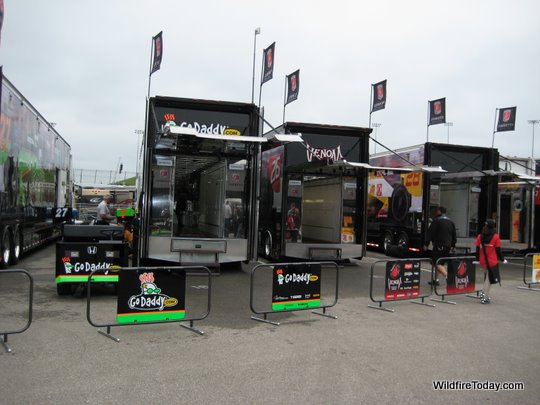

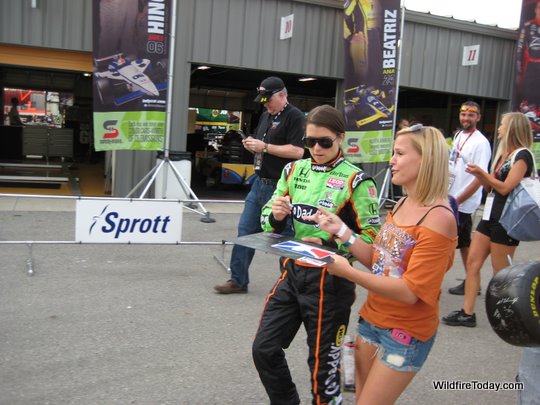
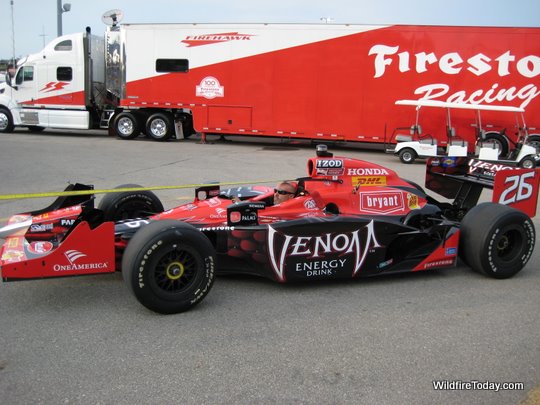
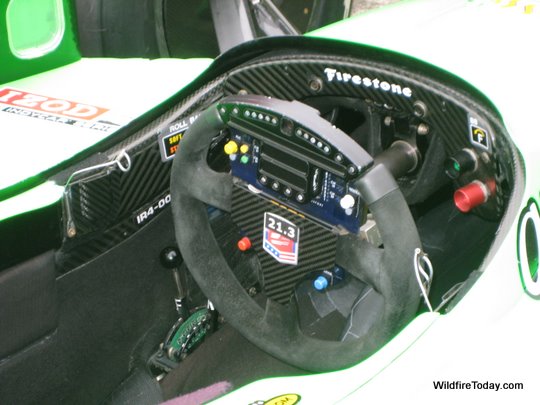


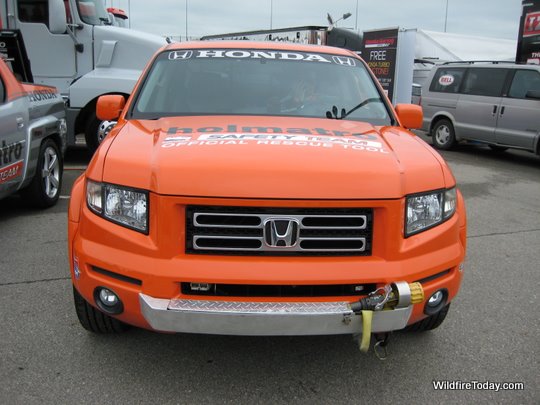
Many years ago (when I was still a seasonal), I used to work part-time for a company that provided race protection (fire, rescue & ambulance) at several venues in southern California.
We had similar problems until the owner started assigning “teams” to work together and constantly train together on a regular basis. The “crew cohesion” concept worked well.
I still remember lots of boring days until the first real emergency happened… An alcohol Funny Car blew an engine (as in blew up) half-way down the track… hit the wall… caught fire.. and slid to a stop just yards from us.
We had agent and foam on the car within 5 seconds… and the driver out within 30 seconds.
All I could think was… I’m getting paid $5.00/hr to watch races AND fight fire… what a life!!… and then I went back to being a Hotshot.